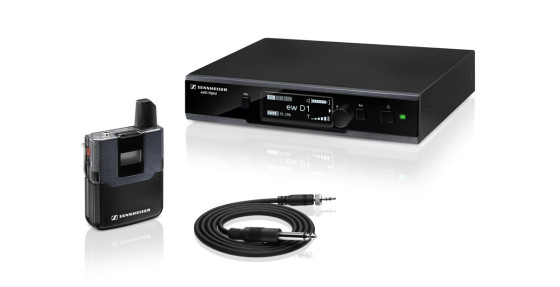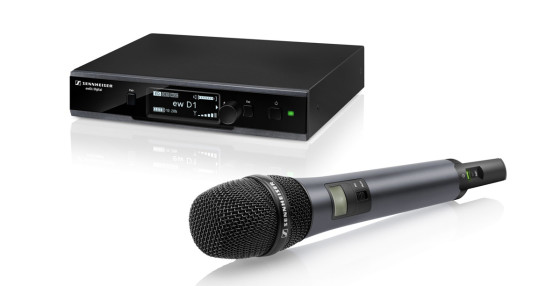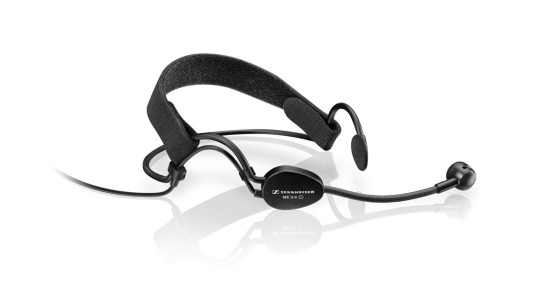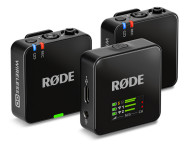
As Sennheiser explains, “with systems for vocals or for instruments, a band’s life is made simpler: transmitters and receivers automatically pair and select suitable transmission frequencies, while multiple D1 systems can automatically coordinate themselves.” Since the new Sennheiser ew D1 system operates in the 2.4 GHz range, which is license-free worldwide, “it takes the complexity out of wireless,” summarizes Martin Fischer, product manager at Sennheiser.
Bands can now just forget about frequency setting, matching transmitters and receivers, and getting the gain right – evolution wireless D1 eliminates all these time-consuming and sometimes error-prone tasks. “Basically, all that is needed is to switch the system on”, said Martin Fischer. “The rest will happen automatically. In no time at all, you’re all set to start jamming – with all the levels right, and a stable wireless link.”
D1 operates in the 2,400 to 2,483.5 MHz range, which is license-free worldwide so there is no need to register the system or pay for the use of bandwidth. Region-specific particularities are catered for in the respective country variants. To allow co-existence with Wi-Fi, Bluetooth and other 2.4 GHz systems, the D1 receiver continually scans the RF environment, and will inaudibly and seamlessly hop to another frequency if it detects any interference. “ew D1 continually checks the entire 2.4 GHz band in your surroundings to guarantee you optimum performance,” added Fischer.

Two channels are always available: besides the actual audio transmission channel, the system runs a redundant back-up channel, thus providing frequency and time diversity. Transmission reliability is further increased by fast-switching antenna diversity. Summing up, Fischer said, “ew D1 uses triple diversity to protect the wireless link between radio microphone and receiver.”
For the audio transmission, evolution wireless D1 employs CSR’s aptX Live codec that ensures excellent audio quality and wide dynamics for vocals, speech and instruments over the entire audio frequency range. Overall latency is a low 3.9 milliseconds, still usable with wireless monitors. To ensure optimum levels, ew D1 automatically sets the correct microphone sensitivity.

Via the ew D1 menu control, bands have a range of audio effects at their disposal. These include a 7-band graphic equalizer, low-cut filter, automatic gain control and de-esser. The D1 vocal systems come with dynamic evolution microphone heads but can naturally also be combined with the condenser capsules from the acclaimed series, which are available as accessories.
Channel coordination and adaptive transmission power
ew D1 systems coordinate themselves fully automatically. For multiple systems, receivers will synchronize themselves to accommodate up to 15 channels in an ideal RF environment.
Where local frequency regulations allow, for example in the USA and Canada, Sennheiser has fitted its evolution wireless D1 systems with adaptive transmission power, with up to 100 milliwatts of power ensuring an extra-reliable link and extended range. For this, the receiver continuously informs the transmitter about how much RF output power is actually needed for a stable signal. The transmitter adapts accordingly and transmits at the requested power. “This feature not only increases the range if, for example, the singer moves further away from the receiver but it also saves battery power in those instances where the transmitter is very close to the receiver,” says Martin Fischer.

Individual items for the D1 series include:
• EM D1 receiver with rack-mount kit (various country versions)
• SKM D1 handheld transmitter (various country versions)
• SKM-S D1 handheld transmitter with on/off switch (various country versions)
• SK D1 bodypack transmitter (various country versions)
• MMD 835-1 mic head (dynamic, cardioid)
• MMD 845-1 mic head (dynamic, super-cardioid)
• MMD 935-1 mic head (dynamic, cardioid)
• MMD 945-1 mic head (dynamic, super-cardioid)
• MME 865-1 mic head (condenser, super-cardioid)
• MMK 965-1 mic head (true condenser, cardioid/super-cardioid, switchable)
• ME 3-II headmic
• ME 2 lavalier/clip-on mic
• CI 1 guitar jack cable
• MZQ mic clamp for handheld transmitter
• NT 2-3 receiver power supply units (various country versions and adaptors)
The D1 transmitters can be powered by either standard batteries or rechargeable “accupacks” that are available as accessories. These rechargeable lithium-ion packs recharge via USB or a docking charger and offer the additional advantage that the remaining battery life is indicated on the transmitter and receiver. Where required, the ew D1 system can be controlled by Apple or Android devices using a dedicated app.
All evolution wireless D1 will be available from March 2015, in complete, ready-to-use systems or can be tailor-made by combining individual components, which is especially attractive for vocal systems. Besides the vocal and instrument systems, the D1 series comprises headmic and lavalier systems.
www.sennheiser-d1.com






